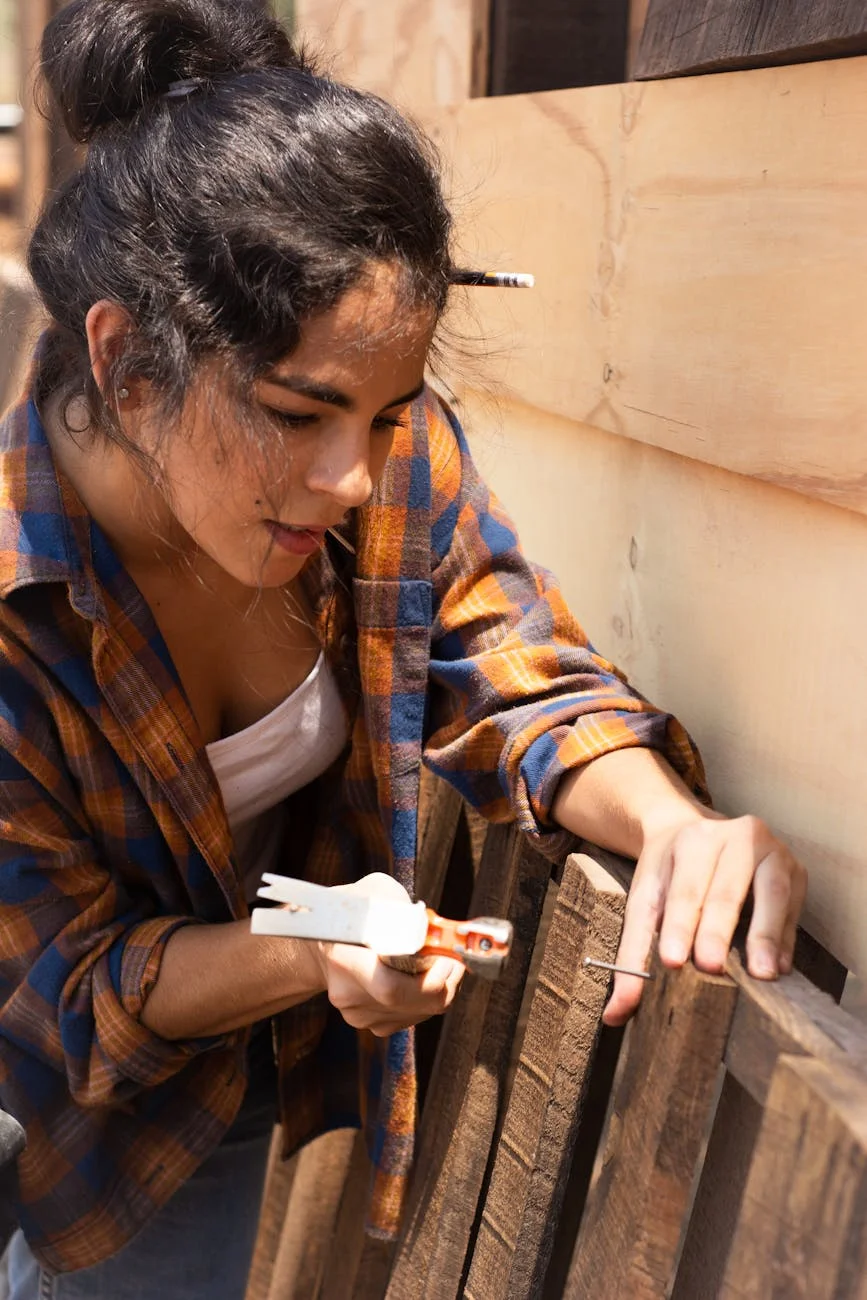
You’re probably staring at another screen right now—and honestly, so was I when I first discovered how dramatically my anxiety dropped after spending just twenty minutes a day with my hands buried in soil. Research shows that screen-free hobbies can reduce cortisol levels by up to 68%, but here’s what the studies don’t tell you: these activities don’t just calm your mind, they actually rewire your brain’s stress response in ways that’ll surprise you.
Gardening: Cultivating Peace Through Plant Care
The simple act of pressing a seed into soil—feeling the earth’s cool dampness between your fingers—can quiet a racing mind in ways that scrolling through endless feeds never could. You’re literally taking control of growth, nurturing something from nothing—and that sense of agency hits differently when anxiety’s got you feeling powerless.
Research shows gardening reduces cortisol levels by 68%, but honestly, you don’t need studies to know dirt therapy works. Whether you’re deadheading petunias (removing spent blooms to encourage new growth) or harvesting tomatoes you’ve babied for months, you’re engaging in what psychologists call “behavioral activation”—purposeful activity that combats depression’s grip.
Even killing a few plants teaches resilience. I’ve murdered more succulents than I’d like to admit, yet each failure builds your gardening intuition and mental fortitude.
Woodworking: Building Focus With Your Hands

While gardening connects you to living, breathing growth, woodworking offers something equally grounding—the meditative rhythm of shaping raw timber into something purposeful with nothing but your hands and basic tools. There’s something deeply satisfying about transforming a rough plank into a smooth cutting board, even if your first attempt looks more like abstract art than furniture.
Research shows that repetitive hand movements—like sanding or planing—trigger the same relaxation response as meditation, lowering cortisol levels by up to 25%. Here’s why woodworking builds mental resilience:
- Problem-solving under pressure: Each project demands creative solutions when measurements don’t align
- Tangible progress tracking: You literally see your stress transform into something useful
- Flow state activation: Complex cuts require complete present-moment focus
Pottery and Clay Sculpting: Shaping Mindfulness
Few activities connect you to the earth’s most primal creative process quite like pottery—where your hands become the tools that transform humble clay into vessels that have graced human tables for over 20,000 years. You’ll discover that working with clay demands complete presence: the wheel won’t wait while your mind wanders to tomorrow’s deadlines, and centering clay requires the same focused breathing that meditation teachers spend years trying to teach.
Research shows that the bilateral hand movements in pottery activate both brain hemispheres, reducing cortisol levels by up to 68%. Whether you’re pinching a simple bowl or throwing cylinders that collapse spectacularly (we’ve all been there), clay work grounds you in tactile reality—no notifications, no multitasking, just you shaping something beautiful from earth.
Journaling: Processing Thoughts Through Written Reflection
When your thoughts feel like pinballs ricocheting between worry, excitement, and that weird anxiety about whether you recollected to lock the door, journaling offers something beautifully analog: a place where your mind can finally exhale onto paper without judgment or timestamps.
Research shows that expressive writing—the fancy term for dumping your thoughts onto paper—reduces cortisol levels and strengthens immune function. You’re literally writing your stress away, which beats doom-scrolling any day.
Here’s how to harness this power:
- Stream-of-consciousness writing: Set a timer for ten minutes and write whatever surfaces, grammar be damned
- Gratitude logging: Document three specific things that didn’t completely suck today
- Problem-solving sessions: Write the issue, then brainstorm solutions like you’re advising your best friend
You’ll discover patterns, process emotions, and gain clarity—all while your phone sits abandoned.
Hiking and Nature Walking: Finding Clarity in Natural Settings

Restlessness—that fidgety energy that makes you feel like a caged hamster on espresso—finds its antidote in the simple act of putting one foot in front of the other on a dirt trail. You’ll discover what researchers call “soft fascination”: your brain’s ability to process stress while observing clouds, listening to rustling leaves, or watching sunlight filter through branches. Unlike scrolling through feeds that demand constant attention, nature walking lets your mind wander productively.
The Japanese practice of shinrin-yoku, or “forest bathing,” demonstrates measurable cortisol reduction after just twenty minutes outdoors. You don’t need mountain peaks or pristine wilderness—urban parks, neighborhood greenways, even tree-lined streets trigger these benefits. Your nervous system literally downshifts from fight-or-flight mode, creating space for creative problem-solving and emotional regulation that screens simply can’t provide.
Knitting and Crocheting: Creating Calm Through Repetitive Motion
Although your grandmother might’ve wielded knitting needles like tiny swords of productivity—churning out sweaters for every family member whether they wanted them or not—modern neuroscience reveals she was actually practicing a form of moving meditation.
The bilateral repetitive movements activate your brain’s relaxation response while simultaneously engaging fine motor skills, creating what researchers call “flow state.” This dual-action triggers serotonin production while lowering cortisol levels—basically hijacking your stress response in the best possible way.
Here’s why yarn crafts become your mental health powerhouse:
- Bilateral stimulation calms your nervous system through cross-lateral brain activation
- Tangible progress provides immediate dopamine hits with each completed row
- Portable meditation lets you carry stress relief anywhere—no special equipment required
You’re literally rewiring your brain while creating something beautiful.
Cooking and Baking: Nourishing Body and Mind
While your Instagram feed floods with picture-perfect sourdough loaves and rainbow-layered cakes that make you question your life choices, the real magic of cooking and baking happens long before you hit “post”—it’s unfolding in your brain as you measure, mix, and transform raw ingredients into something nourishing.
You’re engaging multiple senses simultaneously: the satisfying thud of kneading dough, aromatic herbs releasing their oils, colors deepening as onions caramelize. This sensory immersion triggers what neuroscientists call “flow state”—that coveted zone where anxiety dissolves and time becomes irrelevant.
Research shows that following recipes activates your prefrontal cortex, the brain’s executive center, while repetitive actions like stirring and chopping release calming neurotransmitters. You’re literally cooking up better mental health, one mindful chop at a time.
Painting and Drawing: Expressing Emotions Through Art
Your hands might shake slightly as you pick up that first paintbrush—mine certainly did, convinced I’d produce something that looked like a toddler’s fever dream—but that tremor isn’t weakness, it’s your nervous system preparing to activate one of humanity’s most ancient forms of emotional processing.
Art therapy research shows that visual expression bypasses your brain’s verbal filters, allowing emotions to flow directly onto canvas. When you’re creating, you’re literally rewiring neural pathways—building new connections between logic and feeling.
Here’s what makes painting and drawing so powerful:
- Color psychology: Blues calm anxiety, reds release anger, yellows lift depression
- Flow state activation: Time disappears as you focus completely on creating
- Emotional externalization: Abstract feelings become tangible, manageable objects
You don’t need talent—you need courage to make marks that matter.
Reading Physical Books: Engaging Deep Focus and Imagination
Since scrolling through digital text has trained your brain to skim rather than absorb—turning you into a mental speed-reader who somehow retains nothing—picking up a physical book forces an immediate cognitive shift that feels almost foreign at first. Your eyes suddenly slow down, actually focusing on complete sentences instead of hunting for keywords like some desperate information scavenger.
This deliberate pace activates what neuroscientists call “deep reading”: sustained attention that strengthens neural pathways associated with concentration and empathy. Unlike screens that fragment your focus with notifications and hyperlinks, physical books create what researchers term “cognitive sanctuary”—uninterrupted mental space where your imagination can fully engage.
You’ll notice improved sleep quality too, since books don’t emit blue light that disrupts melatonin production, making this the perfect pre-bedtime ritual for reclaiming both focus and rest.
Playing Musical Instruments: Harmonizing Mind and Spirit
When you first pick up a guitar, piano, or even a dusty harmonica you found in a drawer, your fingers fumble like they’re trying to solve a Rubik’s cube blindfolded—but this initial awkwardness triggers something remarkable in your brain. You’re literally rewiring neural pathways, creating new connections that strengthen cognitive function while flooding your system with feel-good neurochemicals.
Music transforms your mental landscape through three powerful mechanisms:
- Flow state activation — complete absorption that melts away anxiety and racing thoughts
- Bilateral brain stimulation — coordinating both hemispheres for enhanced problem-solving abilities
- Emotional regulation mastery — channeling feelings through rhythm and melody instead of destructive outlets
Research shows musicians have increased gray matter density, meaning you’re building mental resilience with every practice session, turning frustration into focus.
Board Games and Puzzles: Exercising Problem-Solving Skills
While your smartphone offers endless digital puzzles that disappear with a swipe, there’s something profoundly satisfying about manipulating physical pieces—whether you’re sliding tiles in a 15-puzzle, strategically placing workers in Agricola, or staring down a particularly stubborn crossword that’s been mocking you from the kitchen table for three days.
You’re not just entertaining yourself; you’re literally rewiring your brain for better problem-solving. Research shows that regular puzzle-solving strengthens neural pathways responsible for executive function—the mental skills that help you plan, focus, and juggle multiple tasks without losing your mind.
Board games add social dynamics to the mix: negotiating trades in Catan, coordinating strategies in Pandemic, or gracefully accepting defeat in chess (okay, maybe not so gracefully). You’re building cognitive flexibility while connecting with others—a mental health double-win.
Meditation and Breathwork: Centering Your Inner World
If you’ve ever tried to “just breathe” during a stressful moment and found your mind racing faster than a caffeinated squirrel, you’re not alone—meditation isn’t about achieving some zen-master state of emptiness, but rather learning to observe your thoughts without getting dragged into their drama. Research shows that regular meditation literally rewires your brain’s stress response, giving you the mental leverage to handle pressure with confidence.
Start building this mental muscle with simple techniques:
- Box breathing: Inhale for 4 counts, hold for 4, exhale for 4, hold for 4—repeat until your nervous system gets the memo
- Body scanning: Notice tension from head to toe without judgment
- Mindful walking: Focus on each step’s sensation and rhythm
Even five minutes daily transforms your inner landscape.
Photography With Film Cameras: Capturing Moments Mindfully
The satisfying *click* of a film camera’s shutter button might seem like a relic from your parents’ generation, but this deliberate, tactile art form offers something our instant-gratification world desperately needs: the practice of slowing down and truly seeing.
Unlike digital photography’s spray-and-pray approach—where you’ll snap forty shots hoping one turns out decent—film forces intentionality. You’ve got thirty-six precious frames per roll, making each shot count. This constraint becomes your superpower: you’ll find yourself studying light, composition, and meaningful moments with laser focus.
Research shows that mindful observation activities reduce cortisol levels and enhance present-moment awareness. Film photography transforms everyday scenes into meditation opportunities, training your brain to notice beauty that rushed living typically obscures.
Volunteering and Community Service: Building Connection and Purpose
When you’re scrolling through endless social feeds feeling disconnected from humanity—despite being “connected” to thousands of people—volunteering offers something your brain craves but rarely gets: genuine human connection paired with tangible purpose.
Research shows volunteering triggers the same neural pathways as receiving rewards, literally rewiring your brain for happiness. Here’s how to maximize these mental health benefits:
- Choose causes that ignite your passion—whether it’s animal rescue, literacy programs, or environmental cleanup
- Commit to regular schedules rather than sporadic efforts to build meaningful relationships
- Match your skills to needs—accountants can help nonprofits with budgets, while teachers can tutor students
You’ll discover that helping others creates a powerful antidote to anxiety and depression while building the social connections that make life meaningful.
Conclusion
You’ve got fourteen powerful paths to reclaim your mental space from the digital chaos—and honestly, your brain’s probably craving this shift more than you realize. Whether you’re kneading clay after a brutal workday, sketching sunrise patterns, or getting dirt under your fingernails in the garden, these screen-free sanctuaries offer something your scrolling habits can’t: genuine restoration. Pick one that sparks curiosity, start small, and watch your mind transform.





Leave a Reply